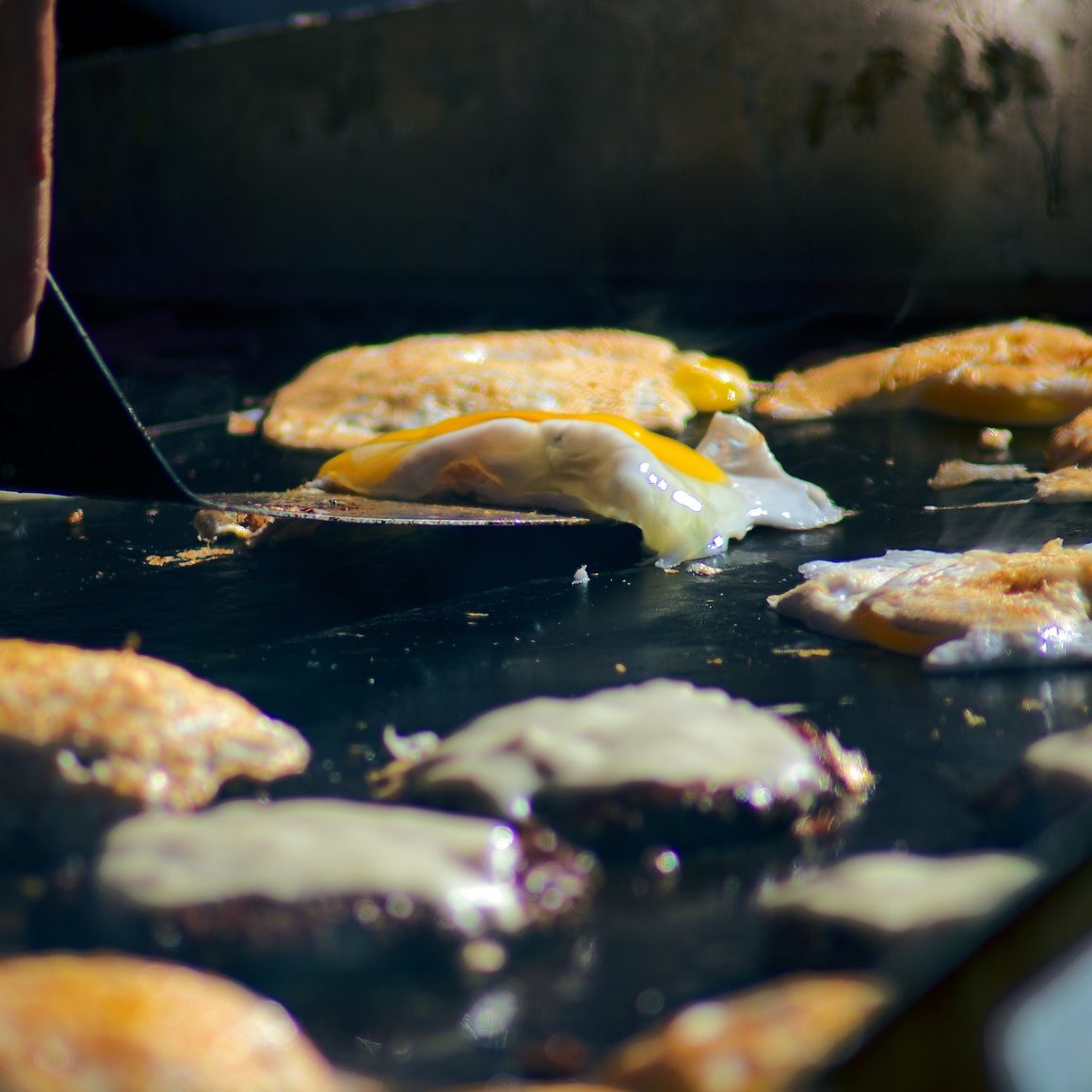Preparing your griddle, or flat-top grill is essential to cooking your meals to perfection and without any food sticking or debris building up. In this piece, we’re going to discuss exactly how to season your flat-top grill.
It’s quite a simple process that anyone is capable of tackling with the proper know-how. All that’s needed is some oil, of your choice but rich in fatty acids, and some time. So let’s jump into the specifics!
First things first, let’s discuss the oil you’re going to need. The best oil to use to season a griddle is going to have a high fatty acids profile, which helps the oil bond to the griddle’s metal plate. Some of the oils that are rich in fatty acids and make perfect candidates for the job are the following:
Oil
- Canola oil
- Extra virgin and regular olive oil
- Vegetable oil
- Corn oil
- Flax oil
- Soybean oil
- Peanut oil
Of course, you’re free to use others but these aforementioned oils will all get the job done. Once you’ve picked one to your liking and you have your oil ready, you’re all but set to begin. Let’s work through the steps.
Cleaning the Griddle
Before beginning the process of seasoning your griddle, you should clean its surface, especially if it’s new or if you plan on seasoning an outdoor griddle.
That simply entails mixing soap and warm/hot water, pouring this mixture onto the surface, and wiping it down with some paper towels or a cleaning cloth.
Make sure to wipe the surface down completely. Once that’s done, you’re good to go for step two.
Heating the Surface
Now that the griddle’s clean, you have to darken it. Before oiling the surface, you’re first going to heat the griddle surface with the burners on their maximum setting. This is to get the griddle surface to a workable level of heating.
You’re going to want the griddle surface to begin to brown, and this should only take about 10 to 15 minutes or so. During this process, the griddle surface will burn off any remaining residue from cleaning or other particulates on the surface. As soon as the surface is heated properly, you’re ready to begin the actual seasoning process.
Seasoning with Oil
With the surface being browned, it’s time to hit it with the griddle cooking oil, but first, you should turn the heat down or off if you haven’t already. The whole purpose of seasoning the griddle is to create a non-stick surface via the oil bonding to the surface.
You’re going to lather the surface in oil and then spread it evenly on the surface using paper towels.
When doing this step, you need to ensure that the oil isn’t pooled up or puddled anywhere on the surface.
You want the surface to be as flat as possible. Don’t forget to use heat-resistant gloves or a tool, such as tongs, to prevent burning your hands! Remember, safety first!
Once you’ve spread the oil evenly, turn the griddle heat back up to its maximum burner settings and let the griddle surface begin working its magic.
The oil should begin to cook on the surface and blacken. Don’t be impatient though, as this process can take up to 30 minutes.
Also, be aware that the griddle will be smoking throughout the process, and for once, this is a good thing.
Repeat
Just one round of seasoning isn’t likely to get the job done in terms of making the surface completely non-stick. Therefore, you’re going to have to repeat this process roughly two to three times depending on the oil and griddle you’re utilizing.
So make sure you’ve turned off the burners, apply another round of oil, spread it evenly, turn the burners back to maximum burn, and sit back and wait for the surface to begin smoking and blackening even more.
Repeat as necessary. Remember, you’re shooting for an entirely blackened griddle surface, not just in the middle of the unit.
Final Oil Application
Now that the surface is properly seasoned, you’re ready to begin cooking delicious meals with incredible tastes. But before you do so, you’re going to want to apply another layer of cooking oil before beginning the actual cooking process.
This helps to prevent the previously blackened surface from oxidizing and ruining the seasoning you’ve worked so hard to apply.
It also adds to the flavorful experience of your meal as this layer of oil, thanks to the non-stick griddle, will work completely on the food while it cooks.
After you’ve applied this cooking layer of oil, you’re free to cook whatever it is you love to cook!
The tastes will be phenomenal and your previous hard work should prevent as much residual build-up as possible.
And so there you have it. You’re now fully informed on how to season your grill and clean it every time you want to cook on your flat-top griddle.
Now that you know how to season your grill, you should do this before every use, ensuring the non-stick surface remains throughout the unit’s lifetime. If you happen to have some food or debris build up on the surface while cooking, you should properly clean the surface before attempting to season it again.
If this is the case, you’re going to want to heat the griddle back up and dump water onto the debris built to help boil it off. In the case that this doesn’t work, try adding some salt to the griddle surface where the food is stuck and try the water boil method again. The debris should now slide right off with a wiping.
Seasoning your griddle is the absolute best way to keep the surface non-stick and capable of pristine cooking throughout the length of its use. You’re now more prepared than ever to season your griddle and enjoy those meals!


